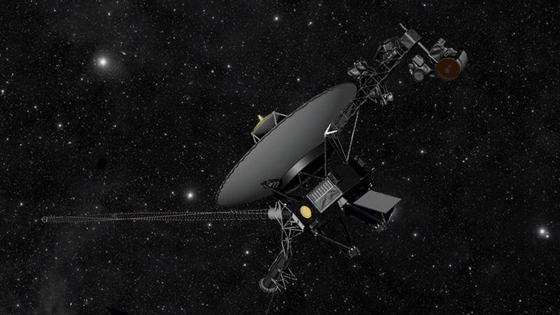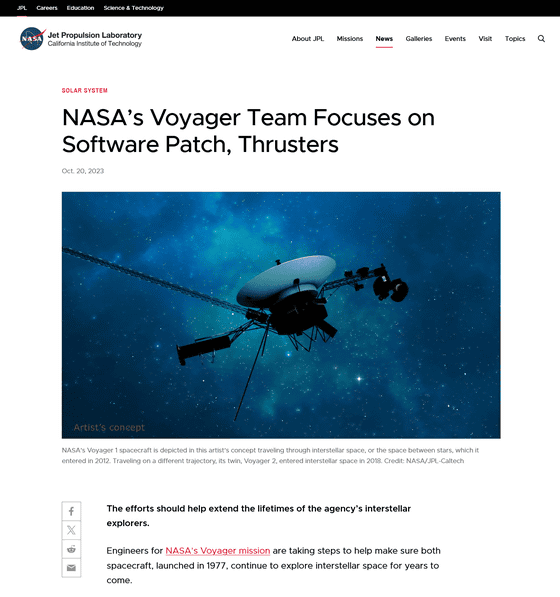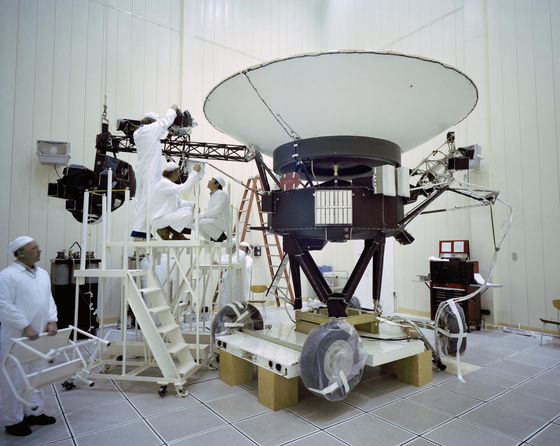NASA sends software update patch to Voyager 2, 19 billion km away, over 18 hours

by NASA/JPL-Caltech
NASA has completed sending a patch that took 18 hours to update the software of the space probe
NASA's Voyager Team Focuses on Software Patch, Thrusters
https://www.jpl.nasa.gov/news/nasas-voyager-team-focuses-on-software-patch-thrusters

NASA just sent a software update to a spacecraft 12 billion miles away
Voyager 2 is a space probe that was launched on August 20, 1977, ahead of its sibling, Voyager 1. Initially, the plan was to explore Jupiter and Saturn over a four-year period, but later the exploration of Uranus and Neptune was added, and in 1990, the purpose was switched to exploration beyond the solar system. We are carrying out the mission above.
However, on Voyager 1 in 2022, the data was garbled even though the Attitude Control System (AACS), which keeps the spacecraft's antenna pointing toward the Earth, was operating normally. There was a problem with the delivery.
Engineers Solve Data Glitch on NASA's Voyager 1
https://www.jpl.nasa.gov/news/engineers-solve-data-glitch-on-nasas-voyager-1

The cause of the garbled characters was that ACCS was sending telemetry data to an onboard computer that stopped working several years ago, and that computer corrupted the data. In the first place, it is unclear why ACCS started sending data to computers that should not have sent data, but NASA determined that ACCS had entered the wrong mode and created a software patch to prevent this from happening. Voyager 2 hasn't had any problems yet, but we decided to patch it to prevent it from happening.
Voyager 1 is 15 billion miles (about 24.1 billion km) from Earth, Voyager 2 is 12 billion miles (about 19.3 billion km) away, and it took 18 hours to send the patch to Voyager 2. .
The patch has successfully arrived aboard Voyager 2, and unless an urgent issue arises, the command will be executed on October 28, local time, to apply the patch.
At the same time, in order to extend the lifespan of both Voyager vehicles, measures will be taken to address fuel residue that is believed to have accumulated inside the thruster tubes.
Voyager can rotate in three directions: up and down, left and right, and on its central axis, and maintains an attitude with its antenna pointing toward the Earth in order to transmit observed data to Earth. Thrusters are used for attitude control, but each time a thruster is fired, the propellant passes through a tube 25 times thinner than the fuel line, which causes a small amount of residue to accumulate.

by NASA/JPL-Caltech
In order to slow down the rate at which this residue accumulates, an adjustment was made in commands sent in September and October 2023 to increase Voyager's rotation range by one degree before thruster firing. The modification reduces the frequency of thruster firing.
Although it is not possible to know exactly when the tubes will become clogged due to residue build-up, it is expected that this precaution will not occur for at least five years. It is also possible that additional measures to extend the life of the thrusters may be taken in the coming years.
Suzanne Dodd, project manager for the Voyager project, said: ``Voyager 1 and 2 are the only spacecraft to ever operate in interstellar space , so the data they send back will be very important to our local universe. It is of unique value in understanding the
Related Posts:







